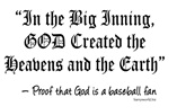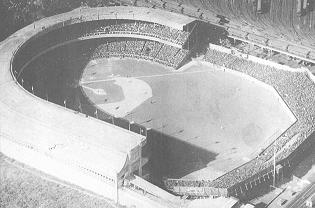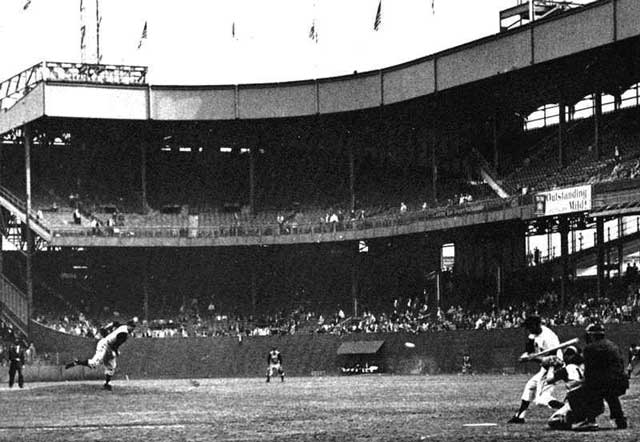The stadium hosted twelve World Series, including the 1921 and 1922 series which featured the Giants and Yankees, both of whom played their home games there. The Giants won those two series after losing the first four they played at their new stadium. They made it to the series in their first year in 1911, losing to the Philadelphia Athletics. They also settled for the National League Pennant in 1912 (Boston Red Sox), 1913 (Athletics) and 1917 (Chicago White Sox). The Polo Grounds also hosted the 1923 Series, which the Giants lost to the Yankees. 1923 was the first year the Yankees played in their new stadium after leaving the Polo Grounds after the Giants evicted them after the 1922 season. The Giants would lose to the Washington Senators in the 1924 World Series before beating them nine years later in 1933. The Polo Grounds saw the Giants settle for NL Pennants in 1936, 1937 and 1951. All those World Series defeats were at the hands of their former stadium partner, the New York Yankees. The Giants final World Series appearance game in 1954, when they beat the Cleveland Indians.
Despite the losing record (4-9 in World Series, two against the Yankees when they still played their home games there), the Polo Grounds became a venue known for hosting World Series. When World Series games were first being broadcast on radio (in 1923), it was the Polo Grounds, along with the New Yankee Stadium, who hosted the Series. While the Yankees started their dynasty winning the first of their 27 Championships, the Giants played in their share of Series.
The stadium seated 56,000 and had more of a football stadium look, than that of a baseball stadium. The New York Giants and New York Titans played their share of games at the Polo Grounds, but it will always be known as a baseball stadium. The park played to the hitters as much as the pitchers; it depended on where the ball was hit. To either of the foul lines, the distance was very short, just 258 down the right field line and 279 down the left field line. Outside of that, it was almost impossible to hit homeruns. Right center was 447 feet and left center was 440 feet away from home. Dead center was nearly impossible at 483 feet. Only Hank Aaron, Lou Brock and Joe Adcock hit homeruns to dead center field in its history. There was an upper deck, though, which hung over the field of play.
The center field clubhouse, which was around 515 feet away from homeplate, never was determined whether it was in play or not. Of course, since Babe Ruth never hit one that way and Mickey Mantle didn't hit one that way in the 1951 Series, nobody challenged the rule over whether the very high clubhouse was in play or not. For the building, which included a 60 foot wall, it was never officially declared where the home run line was and if one even existed. Some say the ball had to clear the fence in the back of the building, which was an additional 90 feet, which obviously never came close to happening.
The Polo Grounds played host to the New York Mets in 1962, 1963 and the first couple games of the 1964 season. The fans were excited that National League baseball was returning after the Giants and Brooklyn Dodgers left after the 1957 season. Even though the Mets were not very competitive, fans showed up and cheered their team on, a sign that NL baseball belongs in New York City. After Shea Stadium was ready to go, the Polo Grounds were demolished, as I started out by saying, on this date in 1964. If the Polo Grounds were around today, they would be 101 years old and would be older than Fenway Park (1912) and Wrigley Field (1914).



 RSS Feed
RSS Feed
